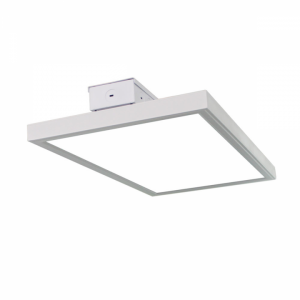- Joined
- Feb 25, 2021
- Messages
- 3,151
Always appreciate warnings on possible issues. But, that is a really ****ty ELT (emergency locator transmitter). ELT’s are activated by high-Gs (like a rough landing). This is a bit suspicious, I would want to see a replication of the triggering to believe it. ELTs are usually mounted high in the tail but can be manually reset. Any aircraft radio will receive 121.5MHz that they broadcast, so easy to test. There is no receive electronics, it is a transmitter only. LEDs themselves are DC, the problem source would be the high frequency from a poorly designed switching power supply. If you buy bottom dollar fixture (not UL approved), I could believe you could have an issue, but … fishy.
(from someone who is a former college flying club maintenance coordinator, former plane owner, and Former flight instructor)
Flourescent lighting involves high voltages for starting, and a discharge Arc through the tube, definitely a source of RF interference. Problems from them are not surprising.
I have an oscilloscope, so easy to hang a wire off it and check for RFI.
(from someone who is a former college flying club maintenance coordinator, former plane owner, and Former flight instructor)
Flourescent lighting involves high voltages for starting, and a discharge Arc through the tube, definitely a source of RF interference. Problems from them are not surprising.
I have an oscilloscope, so easy to hang a wire off it and check for RFI.
I have been reading a lot about LED lighting effecting electronics. One story was actually from a friend of mine who has his own hanger and plane. He said his emergency locator (not sure of the actual name) in the plane kept going off and alert Search and Rescue. Got to the point that he knew the dispatchers by first name. His club had a get together and a tech was there from I think another locator mfg. Got to discussing the issue, since the locators cannot be switched off seem the LED lights in his home hanger were activating it. They determined that they had to add more shielding and move the antenna farther from the unit.
Not sure if it would have any affect on your electronic equipment or systems, I only mention this as you have indicated that you do electronics.
For me and my competition shooting, my Sartorius lab grade scale is affected by just about everything including slight breeze (or breathing), vibration, looking at it wrong, cell phones and fluorescent lighting. The phone and lighting can cause it to wonder. When you are measuring powder down to the hundredths of a grain (a single kernel is about 0.020+- Grains), having it wonder as much as 0.5 grains is a big deal. Also, since I am loading very close to the max, don't want to over charge.
Seems like there is a cause and affect for everything.
Rambling again.



